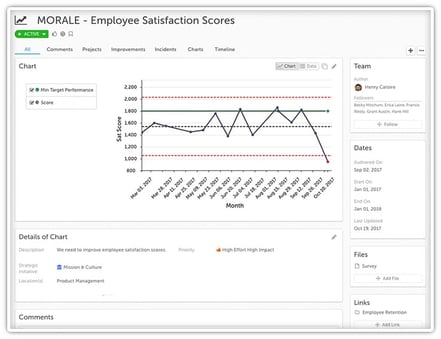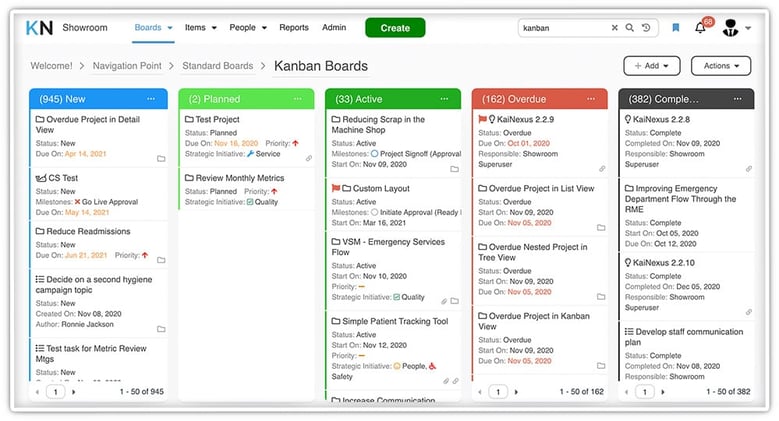 Lean is a business methodology designed to improve value delivered to customers by reducing variance in the production process and eliminating waste. Lean leaders know that when an operation lacks the stability to create high-quality output with predictable results consistently, it will continue producing unsatisfactory products until someone intervenes and improves the process.
Lean is a business methodology designed to improve value delivered to customers by reducing variance in the production process and eliminating waste. Lean leaders know that when an operation lacks the stability to create high-quality output with predictable results consistently, it will continue producing unsatisfactory products until someone intervenes and improves the process.
Producing the desired results every time requires constant monitoring and measurement because systems tend to erode if not kept in check. Over the years, Lean experts have developed a set of tools and techniques that address control, and problem-solving, and improvement to eliminate defects and waste. Here are a few of the most useful with links to more details about each one.
Tools that Deliver Control
These tools help create the conditions for predictable and efficient process operation.
Standard Work
Standard work is simply the documentation of the best practices for any process or task at that given moment. It is created and maintained by the people who operate each process. It represents the baseline for improvement and ensures process consistency.
Control Charts
 A process control chart is a graph used to visualize how a process performs over time. Data points are plotted in time order in a chart with a central line for the average (or median), an upper line for the upper control limit, and a lower line for the lower control limit. Process control charts help managers avoid panicking over every unimportant up and downswing. They help avoid problems caused when you look only at average results, instead of the variations of results.
A process control chart is a graph used to visualize how a process performs over time. Data points are plotted in time order in a chart with a central line for the average (or median), an upper line for the upper control limit, and a lower line for the lower control limit. Process control charts help managers avoid panicking over every unimportant up and downswing. They help avoid problems caused when you look only at average results, instead of the variations of results.
5S Workplace Organization
In the quest to eliminate variation, an organized and well-supplied workplace is essential. The Lean technique for workplace organization involves 5 steps that start with an S in both English and Japanese (Rōmaji). They are seiri (sort), seiton (set), seiso (shine), seiketsu (standardize), and shitsuke (sustain).
Kanban
Kanban is a visual management principle based on maximizing the flow of goods and work while eliminating the wastes of transportation, inventory, and waiting. While initially used with physical cards at Toyota, Kanban can now be done digitally. Organizations in every industry, from healthcare to software development use digital Kanban boards to track the flow of work.

Gemba Walks
The Japanese word “Gemba” refers to “the real place.” During a Gemba walk, the leader goes to the place where work is done to show respect for the employees, observe, ask questions, and identify opportunities for improvement.
Hoshin Kanri (Policy Deployment)
Hoshin Kanri, sometimes called Policy Deployment, is a strategic planning method that aligns the organization around the most important, long-term strategic goals. The takes into account the need to achieve daily incremental improvement while at the same time moving ever closer to the organization’s three to five-year breakthrough objectives.
Lean Tools for Problem Solving and Improvement
Despite excellent control, organizations will encounter problems and opportunities for improvement. In that case, one or more of these Lean tools will come in handy.
DMAIC
DMAIC is a five-phase improvement cycle that includes; define, measure, analyze, improve, control. It structures the improvement process and ensures that each change is based on careful analysis and accurate data. The process starts with the Standard Work and repeats whenever a new opportunity for improvement is identified.
PDSA
PDSA is a slightly simpler improvement cycle that stands for Plan, Do, Study, Act. It is an alternative version of DMAIC that works well for improvement projects that are not heavy on statistics.
A3 Problem Solving
A3 it is a structured problem-solving approach that gets its name from the size of paper that was used before digital tools became available. An A3 distills the results of a DAMIC or PDSA improvement cycle into a report that is focused and easily understood.
The 5 Whys
The 5 Whys is a Lean tool for getting to the root cause of a problem. By asking and answering the question, “why?” as many times as necessary (often 5 or more) the underlying cause of a problem can usually be identified.
Value Stream Mapping (VSM)
Value Stream Mapping is a Lean tool for understanding the movement of raw materials and work from the beginning of the process to the customer. When the creation of value is visualized, areas that need improvement are easier to identify.
Catchball
The Lean technique of Catchball involves passing ideas from one person to another for feedback and improvement. The idea (“ball”) is set in motion when someone, usually a manger, defines a challenge or opportunity. It then moves back and forth, up and down across the hierarchy, until a plan for action is developed.
Lean Software
All of the Lean tools we’ve mentioned so far can be practiced without the aid of specialized technology. However, a software platform built to support Lean simplifies their use and improves results. Also, software helps you calculate the impact of Lean and secure further engagement and investment in the approach.
This list is not a complete inventory of all Lean tools, but these are the essential techniques to master. You may find that you use all of them, or only a handful, but some combination will likely help you achieve less variation generally, and respond more effectively when challenges arise.



Add a Comment